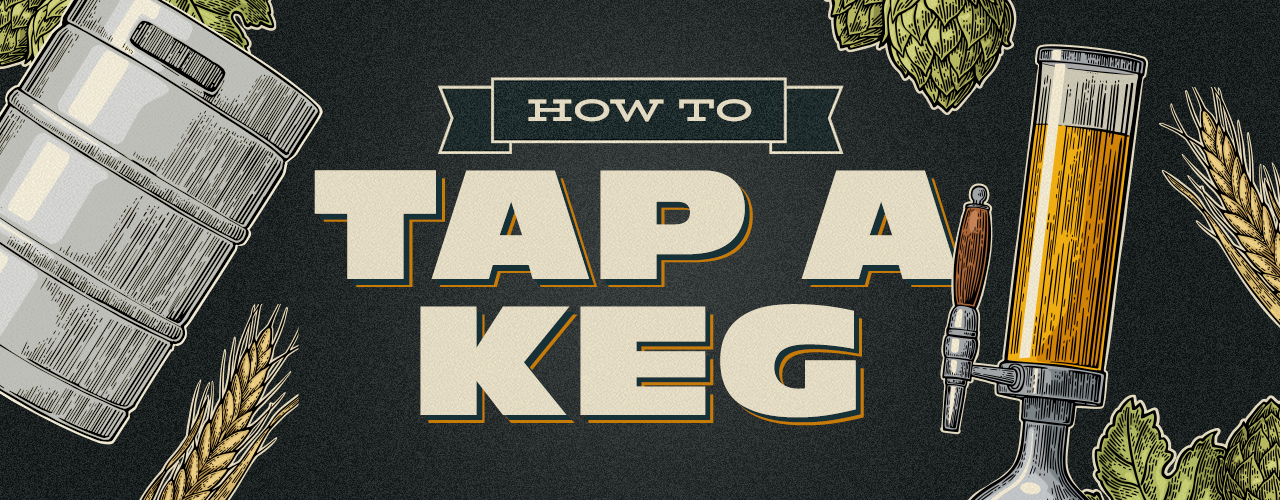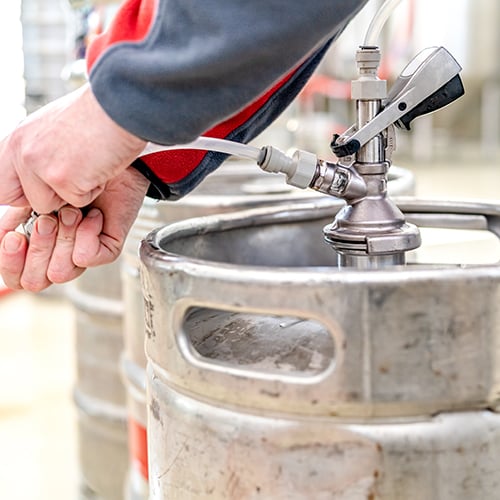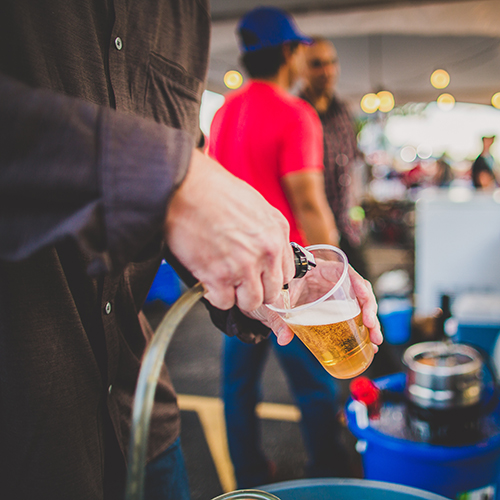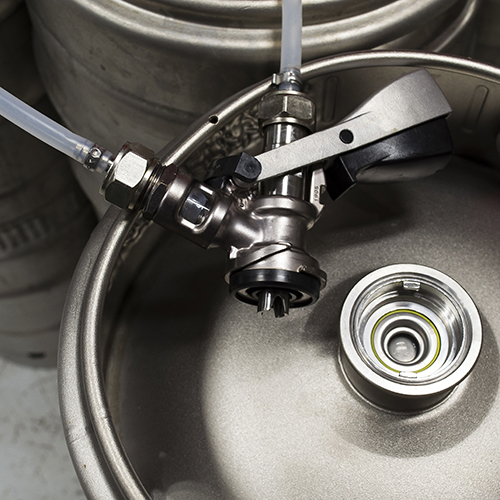
How to Change a Keg
Last updated on 5/1/2024Changing a keg is fundamental for aspiring bartenders and establishments serving draft beer. Whether you operate a bustling bar, a trendy brewery, or a cozy pub, knowing how to properly tap a keg is essential to maintaining a steady flow of refreshing beer for your patrons. Use this step-by-step process of changing a keg that includes preparation, tapping a keg, and disconnecting the draft system from an empty keg.
How to Tap a Keg

Whether you use a direct-draw system or a manual tap, follow these steps to learn how to tap a keg without delaying or disrupting service at your establishment.
1. Prepare the Keg for Tapping
Preparation is just as noteworthy as your tapping technique when serving draft beer. Small mistakes can damage your equipment, delay service, or cause substandard pours. Before you begin the tapping process, complete the following items:
- Check that you have the correct tap system for your keg. US manufacturers use the "D" system, while European importers typically use the "S" system or "G" system.
- Chill the whole keg in a large bucket filled with ice for several hours. This process prevents foamy beer when you pour.
- Some operators also chill their tap and beer lines beforehand for a better pour.
- Ensure the pump is disengaged and the handle is upright in the unlocked position. Otherwise, beer might spray everywhere when you attempt to tap the keg.
2. Attach the Tap to the Keg
Before you begin, check that the handle is upright, the pump is disengaged, and the faucet head is closed to avoid an impromptu beer bath. Remove any protective cover and align the base of the coupler with the spout on top of the keg. Once you're sure it fits, press the coupler down into the spout and turn the pump clockwise by 90 degrees.
The pump should be snug and straight if inserted correctly. If the unit is slanting, loose, or leaking foam from the connection point, disengage the coupler from the spout and try inserting it again.
3. Push the Tap Handle Down
Once you're certain the tap is attached correctly, engage the pump by pressing down on the handle into the locked position. This allows gas to enter and beer to flow through the hoses. Finally, check the seating for bubbles or foam, meaning the tap is set incorrectly and must be removed to try again.
4. Pour the First Beer

Now that you tapped the keg, push the nozzle down on the dispenser to pour the first beer. You do not need to pump the tap beforehand as the natural CO2 inside will produce enough pressure to keep the beer flowing. If you immediately start pumping, the liquid will become more foamy and you'll waste valuable beer.
The first few cups will likely be more foam than beer. Set them aside to settle and continue pouring.
5. Pump the Keg as Needed
Most mistakes with kegged beer result from incorrect pumping. Depending on the type, the tap's pump adds oxygen or carbon dioxide to the keg's interior to increase pressure and encourage a steady flow when pouring. Pumping too often, too little, or incorrectly leads to foamy beer and poor quality.
Avoid the following errors when pumping your keg:
- Pumping too often or too much: If you pump the keg too frequently or too many times, the beer will become too foamy to enjoy. Only pump when the flow slows down, and pump only around five times to get the beer pouring smoothly again.
- Pumping too little: Leaving a keg to sit without pumping it results in the beer's CO2 separating from the liquid, changing the flavor and increasing foam. If the flow slows, don't be afraid to pump it until it pours quickly again.
- Pumping with the valve closed: Always check that the pouring faucet is open before you pump the tap. A closed faucet results in too much pressure inside the keg, causing the beer to pour too quickly with too much foam.
- Pumping too hard: Use gentle pressure to protect your draft system and to ensure the correct amount of gas enters the chamber to prevent foamy beer.
How to Untap a Keg

Once the keg is empty, use these simple steps to detach the draft system from the spout:
- Pull the locking handle out to unlock it.
- Disengage the tap by pulling the locking handle upwards. Check that the handle is completely up, or you'll be sprayed with any beer left in the lines when you untwist the tap.
- Twist the tap counterclockwise to release it from the spout.
- Drain tap lines, rinse with water, and clean the pump before tapping a new keg.
Ensure a seamless transition between kegs and keep the drinks flowing smoothly at your bar, brewery, or beer garden by efficiently changing old kegs for fresh ones. Correctly tapping a keg maintains beer quality and keeps customers satisfied with their beverages. At the end of the night, check your draft system for damage or debris and thoroughly clean the lines and faucets.






